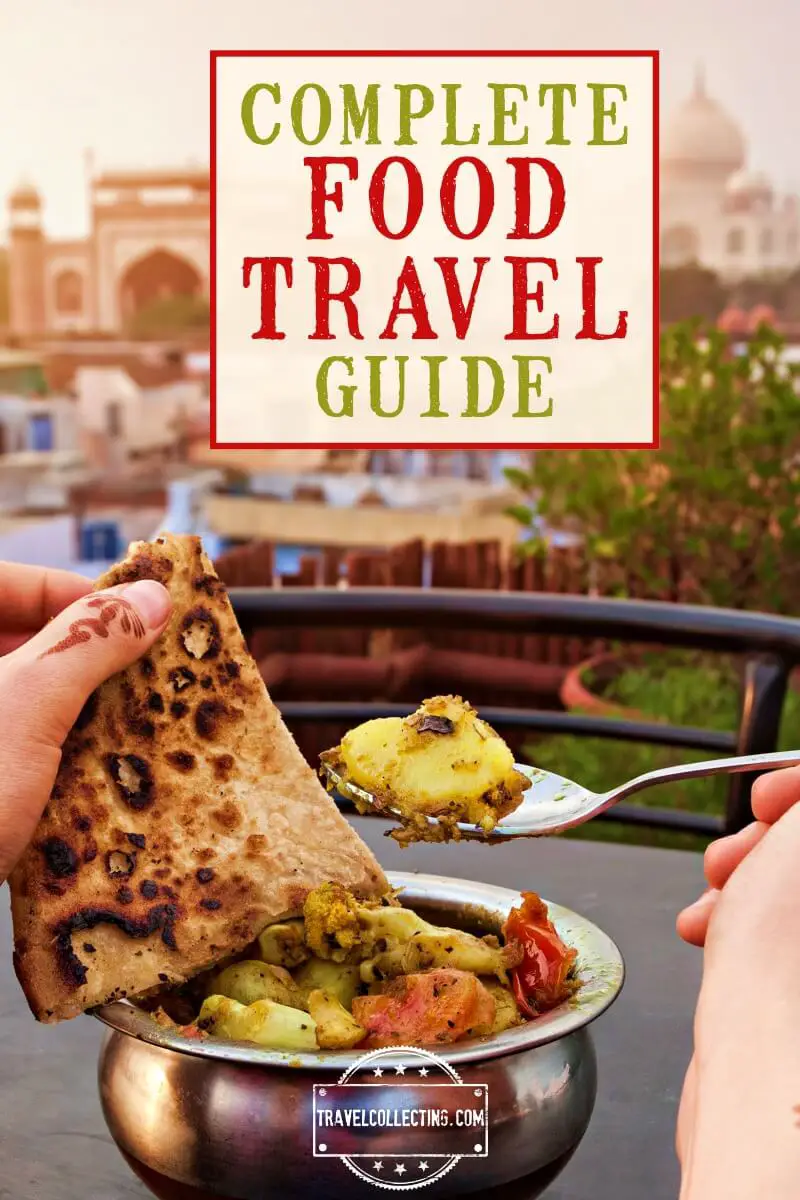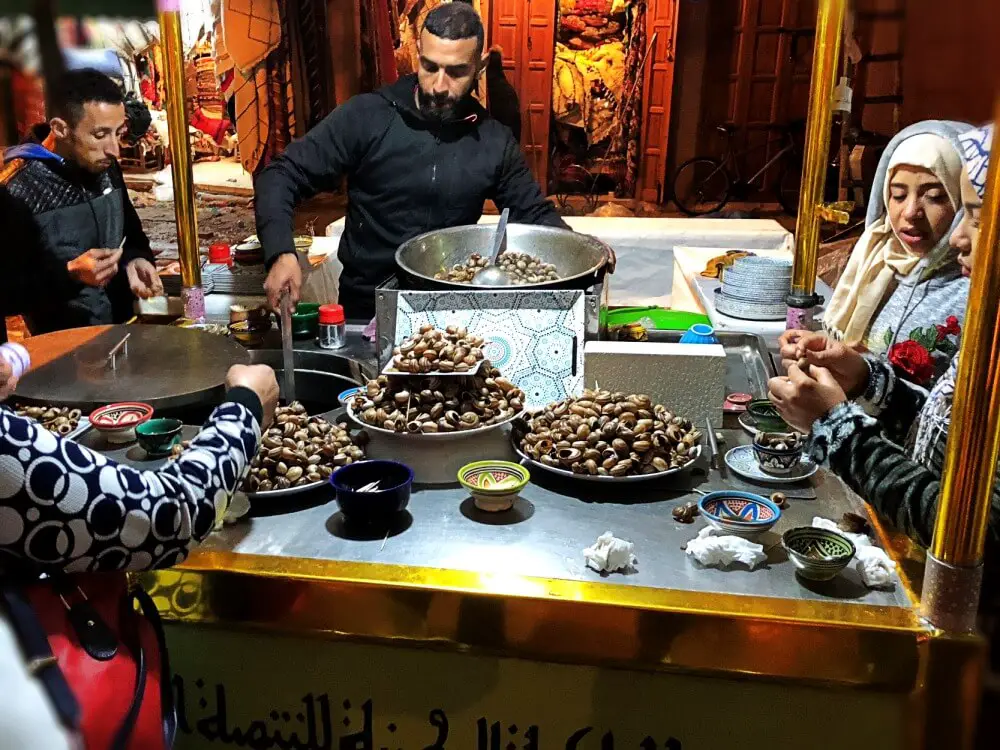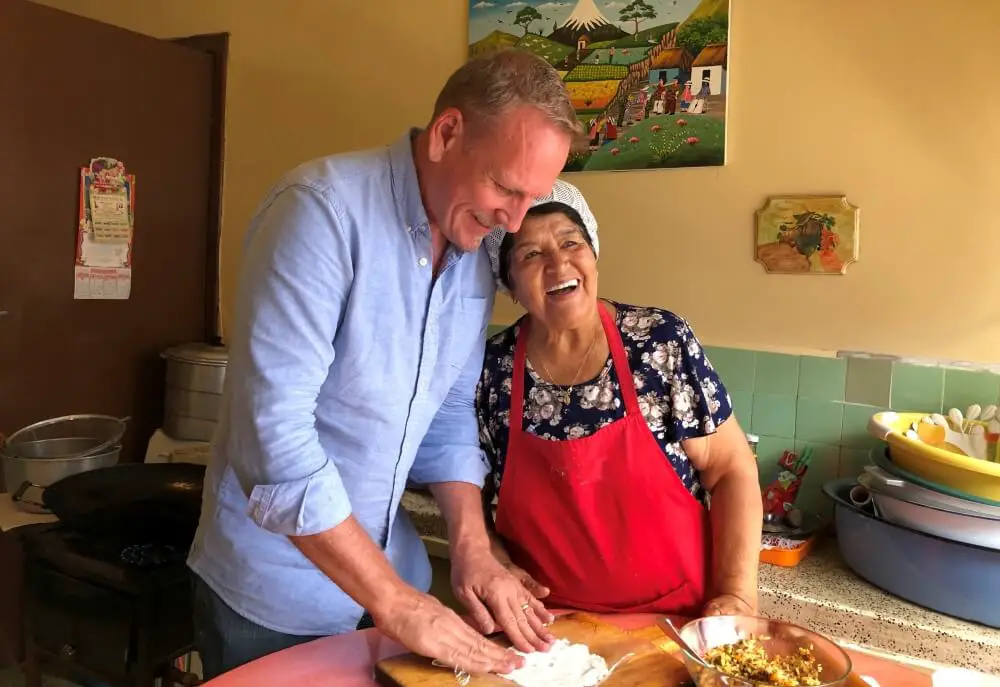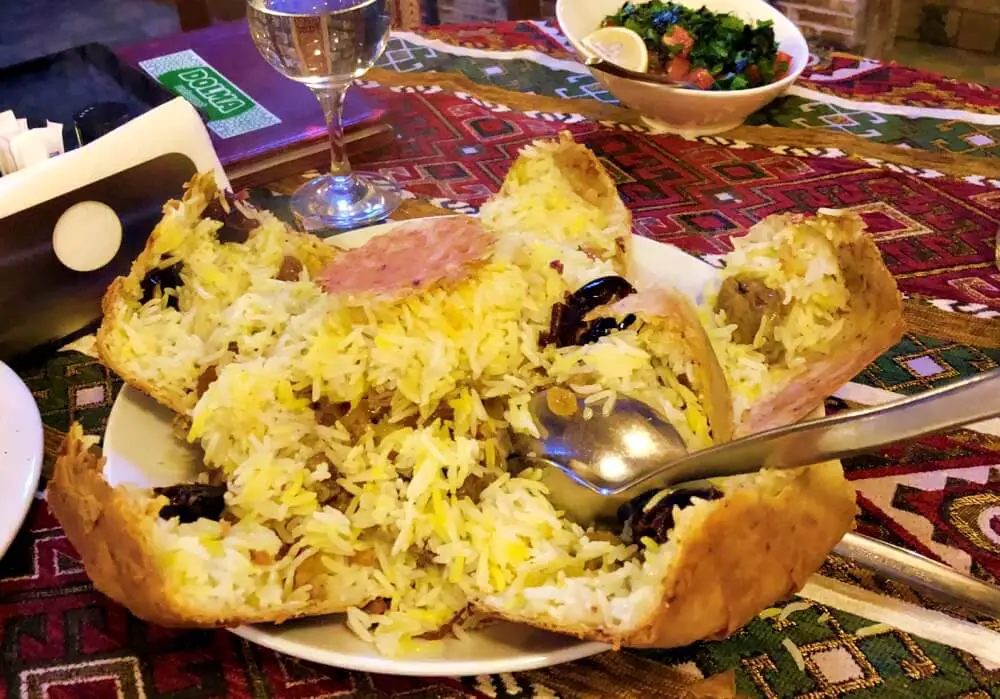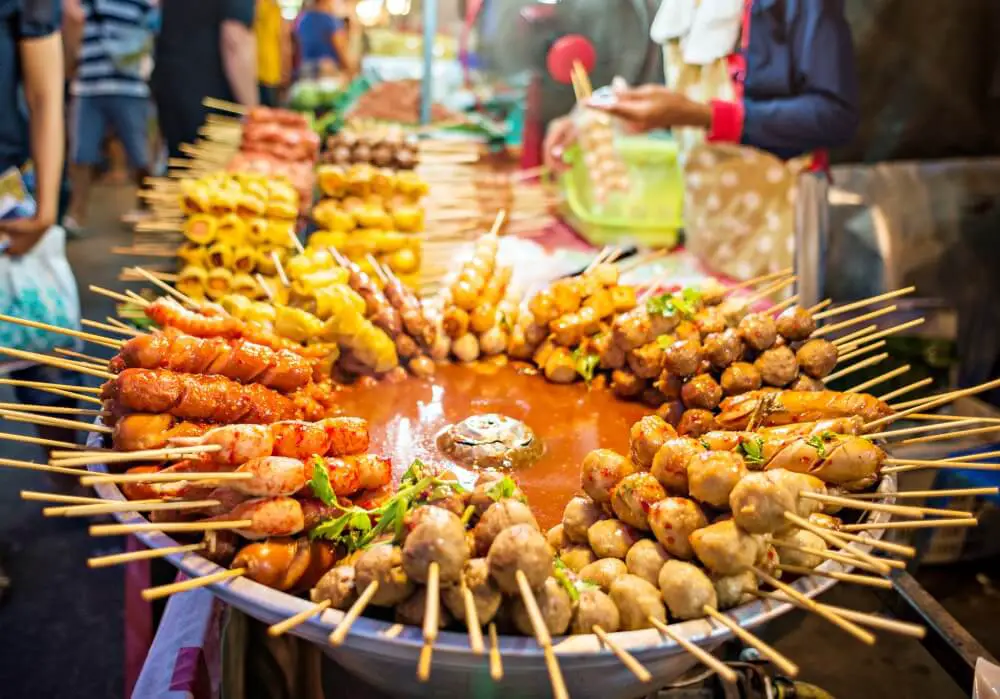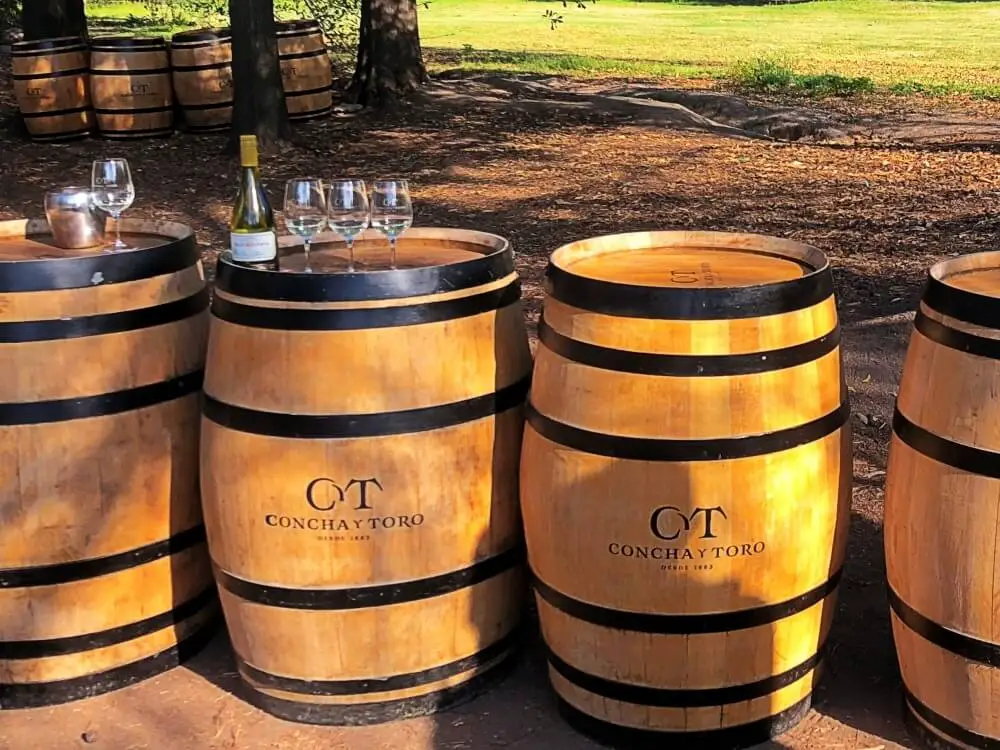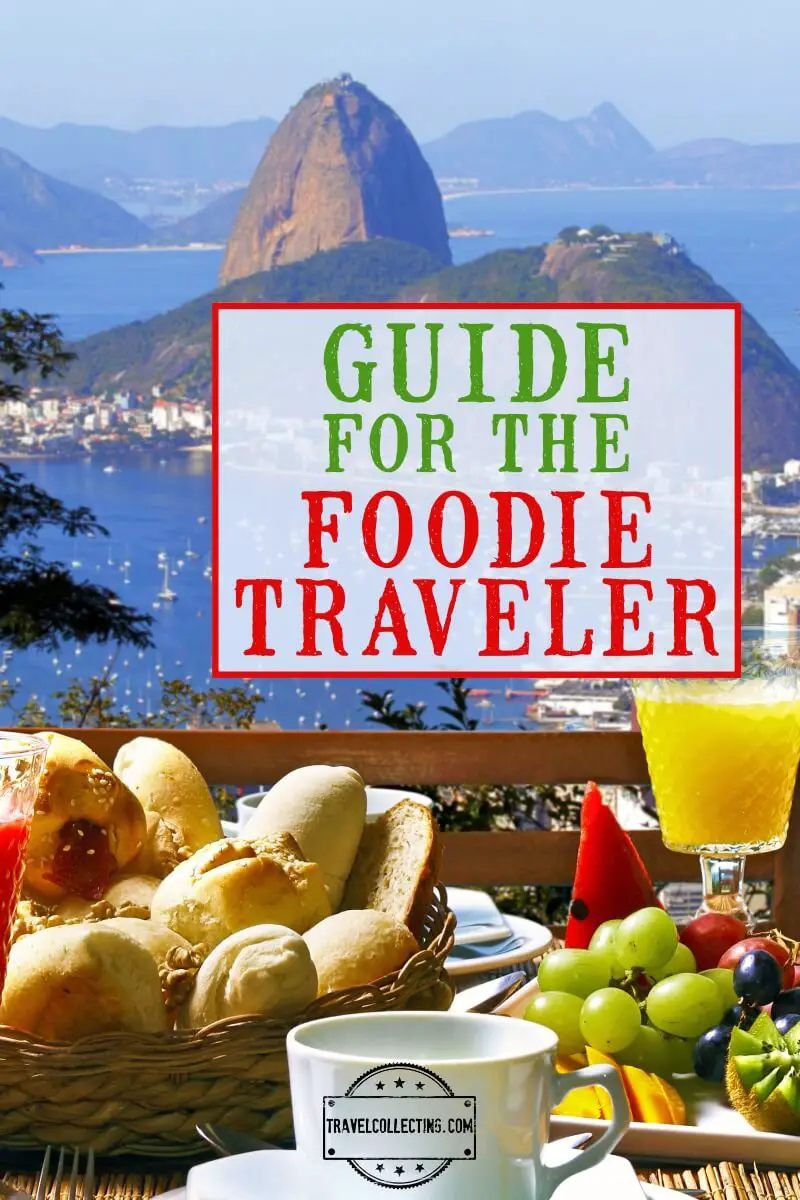Food and travel and culture are so interconnected for me that I can’t imagine traveling without trying the local food and drink. Many people feel the same, and this has given rise to Food Tourism (AKA Culinary Tourism or just Foodie Travel). What exactly is food tourism and how can it make your vacations better? Let’s take a look.
Please note that some of the links below may be affiliate links. At no additional cost to you I earn a small commission if you make a purchase. If you are ready to book your trip and would like to support this website in some way, using these links is one way to do that. Read my Disclaimer for more information.
This Food Travel Guide is designed to stir your sense of adventure and curiosity and give you some practical tips to help you include Foodie Travel in your next vacation.
First, though, a quick overview. For posts related to Food Travel, scroll down to the bottom.
What is food tourism?
The World Food Travel Association describes food tourism as the “act of traveling for a taste of place in order to get a sense of place.” Every time you try something new, or perhaps go somewhere because you love the food, this is food travel.
Reasons to include Food Tourism in your vacations
(a) Experience local culture through food
Food and drink are an inherent part of the local culture and trying them is a way for you to connect more deeply with the culture. Some examples:
Mint tea, Morocco
Moroccan mint tea is more than just sweet tea – it represents a traditional way of life, of leisure, of community and of hospitality. Teahouses form an essential community base. Consumer transactions and social visits are held over a glass of sweet tea.
Yak butter tea, Tibet
Yak butter is ubiquitous in Tibet and the pungent scent of yak butter hangs heavily in the air of temples from the burning candles. It is also used to make a tea that is drunk everywhere by Tibetan people. Yaks are a hardy animal that thrives in the harsh Tibetan climate and provides valuable protein and fat to the Tibetan diet, despite the prevalence of Buddhism.
Sharing a cup of hot yak butter tea is an act of hospitality and if you are lucky enough to meet some Tibetan people, chances are you will be offered some tea. Refusing an offered cup of tea would be rude – and when you force the cup down, it will invariably be filled again.
Snail soup, Morocco
Moroccan snail soup, which may seem off-putting at first glance, is a fascinating blend of French escargot and earthy, exotic Moroccan spices. It is a fusion that comes about from the combination of traditional Moroccan food with the cuisine of the colonial French, resulting in something new and unique.
Fika, Sweden
Fika, the art and act of having coffee and a little something sweet is a way of life in Sweden. Joining in and fika-ing daily on your trip to Sweden is a way of participating in the daily rhythms of Swedish life. The fact that almost all baked goods have cardamom in them is also a fascinating insight into the history of food and how spices traveled from India half away across the world to became an integral part of a very different culture.
This connection with the local culture is part of what makes food tourism / culinary tourism so great.
(b) Connect with people through food
Food tourism is becoming more popular because food is also a great way to connect with people. On a food tour, you will get a chance to meet a local guide. In a cooking class, you will meet a cook and/ or translator. At a street food stall, you will see food being prepared for regular, everyday people and perhaps have a chance to talk with other people enjoying the food. These are wonderful opportunities to connect with the people who live in the place you are visiting.
(c) Learn more about the food and culture
By taking a food tour, enjoying a tasting and joining a cooking class, you will have a chance to learn more about the food, the ingredients, cooking and food preparation techniques. In the process, you will learn more about the place where this is all happening.
(d) Be adventurous and try something new
Food travel is to have a food adventure. The foodie experience often involves getting out of your comfort zone. Try not to say ‘no’ to anything, and try everything with an open mind (dietary restrictions aside, of course). Maybe eating horse seems off-putting, but it is a local staple in Kazakhstan. Try it, and you may be surprised.
Pay attention to hygiene of course, but otherwise, I encourage you to get out of your comfort zone and be adventurous. Even if you don’t like, it, at the very least, you will have a tale to tell.
This includes:
- slurping snail soup in Morocco (earthy and tasty)
- getting stuck into kangaroo burgers in Australia (rich)
- trying blood sausages with raw garlic in Korea (spicy)
- giving lavender ice cream a go in France (delicious)
- eating a sheep’s eyeball in Morocco (surprisingly delicious despite its somewhat gelatinous texture)
- having alligator sausages in New Orleans (tasty)
- nibbling on cricket fritters in China (crunchy)
- dining on fried snake in Hong Kong (not too bad)
- drinking yak butter tea in Tibet (let’s call this one an acquired taste)
- sampling roast guinea pig in Ecuador (nice enough, but the little clawed feet were off putting)
Subscribe to monthly updates with tips for planning, travel inspiration and trip ideas and get instant access to the free PDF of this
Food Travel Guide
Types of Foodie Travel
Foodie travel is to travel for food, but foodie adventures can take many forms.
(a) Cooking classes
This is a classic foodie adventure and one that is easy to arrange and fun to do.
I love to travel and cook for several reasons. Of course, I love the food that is cooked on the day and that I get to eat and maybe even take back to my hotel or AirBnB. I also appreciate the fact that I can take my travel experience back home and relive the flavors of my vacations back at home by making the recipes again.
However, the main benefit for me is the opportunity it gives me to meet local people and interact with them and the local culture in ways I wouldn’t otherwise be able to do.
Meeting women in male-dominated cultures
It is not always easy for men to meet women and talk to them in societies that are more male dominated, so I appreciate the opportunities that these cooking classes sometimes give me.
In Marrakech, Morocco, for example, I took a class in a woman’s home and got to see behind closed doors, meet her family and learn more about her life, through a translator. There are few opportunities in Morocco for men to interact with women and almost none to enter into someone’s home without knowing someone. In Quito, Ecuador, I also took a class that was held in an apartment and got to spend time, again with the help of a translator, with a local woman.
Participating in local life
In Fes, Morocco, I took a bread baking class and we took the bread to a communal oven to be baked. Participating in this was a much deeper experience for me than just visiting a communal oven on a tour.
Other cooking classes I’ve taken have included trips to local markets to buy the ingredients. Being able to shop in the local produce market was a wonderful experience that again enabled me to participate in daily life in a way that tourists rarely have the opportunity to do. Buying produce to cook with is again a more meaningful experience than just wandering through a market taking photos.
How to choose a cooking class
Not all cooking classes are equal, however, and there are several things to consider. Read my blog post about How to Choose the Perfect Travel Cooking Class.
While one-off classes are most common, it is also possible to take cooking travel tours.
Where to find the best cooking classes
Before you can do any of this, you need to know where to find the best cooking classes. These days it is pretty easy, as you can find everything online. My go-to companies are Viator and Get Your Guide. They have a great selection of classes.
However, there are other places too. Lonely Planet sometimes lists places that offer cooking classes. Kevin found a great BandB owner who taught private lessons in making cinnamon buns on Vauxhall Island near Stockholm on Instagram. You can also try and Google directly, of course.
But mostly I use Viator and Get Your Guide (click on the links to find cooking classes for your next trip).
(b) Food tours
Culinary tours are one of the best ways to discover a variety of local foods.
What to expect on a food tour
Foodie tours typically involve a small group of travelers joining a local guide who takes the group to several places, giving them a small sample of different local dishes at each place.
Sometimes this may involve walking around a local neighborhood. Other times, the entire foodie tour takes place in one market. They often include a mix of street food and short sit-down meals. They typically involve a mix of food and drinks, of small bites and bigger dishes, and of savory and sweet treats. I have even been on a food tour that was little more than a visit to one restaurant and then tea in a nearby teahouse.
Food tours may include alcoholic drinks, but often these are optional extras.
Things to consider when booking a food tour
There are several things to think about when booking a food tour. Read my Guide to Choosing the Best Food Tour here.
When you have chosen your food tour, make sure you know what time is starts and where the meeting point is. The meeting point is usually an easily-identified public place, but it is always good to get there a little early so that you aren’t late. They usually don’t wait very long for stragglers.
The question most asked about food tours is “How hungry should I be beforehand?” Good food tours will involve a lot of food, so you definitely don’t want to be full. However, it is best not to be starved either, as you don’t usually get a lot of food straight away.
I like to eat a light meal a few hours before, so I am not starving, but still have lots of room in my stomach. If you don’t usually eat a lot, you might want to pace yourself and try everything, but not eat everything from each dish.
Where to book a food tour
Again, I use Viator and Get Your Guide (click on the links to find food tours for your next trip).
(c) Street food
Street food is a fantastic way to delve deep into a culture. This is the real deal. And it is often absolutely delicious. However, it can also be the start of days spent hugging a toilet after the onslaught of traveler’s belly! It would be a shame to avoid street food all together, but it is worth taking some basic precautions.
- If you are travelling in a country where the tap water isn’t safe to drink, avoid anything that has been washed in water, such as salads.
- Always choose a popular place with a high turnover. You don’t want to eat meat that was cooked ages ago and has spent several hours sitting around in the heat.
- Look at their refrigeration techniques. Even if the meat is cooked frequently, is the raw meat sitting around warm?
If a place is popular with locals, has good hygiene and doesn’t have salads washed in tap water, then chances are it is safe to eat. However, you need to make the decision for yourself as to whether you want to take the risk.
(d) Specialty dining experiences
Gastronomic tourism involves visiting top restaurants that often feature local, seasonal produce prepared by an award-winning chef. They are often incredibly expensive, but and will invariably have modern twists on traditional foods. If you love food and your vacation is a way to treat yourself, then trying one or more tasting menus or sampling from their a la carte menu in a top restaurant featuring local cuisine will almost certainly be a highlight of your vacation.
There are also other unique restaurant experience like high tea at the Savoy Hotel in London.
TIP: Always make reservations well in advance. I recommend making a reservation as soon as you book your flights and hotels.
Check out the list of the world’s 50 best restaurants for additional inspiration.
(e) Food festival and wine or beer festivals
Festivals are a wonderful way to get an overview of many different foods. Many places have annual festivals that feature local cuisines, beers or wines. They usually have stalls with different foods, so you can try several things. Hygiene standards are usually high, so you don’t have to worry about getting sick. They often also have cooking demonstrations (in the local language).
It’s worth checking to see if there is a food festival on around the time you are thinking of going somewhere and tweaking your dates slightly if necessary so you can go. Check out a good list of food festivals in the United States and Food festivals around the world here.
(f) Drinks
It’s not all about the food.Culinary travel also involves drinks. Visiting wineries, breweries and cider houses to learn how the drinks are made, see where the ingredients are grown and try samples straight from the source is one of my favorite travel activities.
There are all kinds of drink experiences to have, including:
- Wineries and vineyards (e.g. Concha y Toro tour in Chile)
- Breweries (e.g. Williamsburg Craft Alcohol Tasting Tour in NYC)
- cider houses (e.g. Basque Cider House tour in San Sebastian, Spain)
- hot chocolate (e.g. making chocolate workshop in Antigua de Guatemala)
- soda producers (e.g. The World of Coke in Atlanta)
Many wineries or breweries will give tours of the factory and/ or cellars. Almost all will have tastings, which may or may not be free. You will be able to buy the finished product, but there is no requirement to do so.
The experience can vary widely
In Spain, I went to a cava winery that was a huge corporate operation with a tour on a little ‘train’ around their cellars, a professional guide with pre-set samples.
In La Rioja region, I visited a tiny family-owned winery, where we were the ones, shown around by a staff member who gave us a lesson in wine tasting, and demonstrated with their own wines.
Finally, we went to Jerez, the home of sherry and they had a tasting in a huge room with multiple tables and an accompanying charcuterie, with a large gift shop at the end.
Each of these was different, but all of them were fun.
Things to consider include:
- The location
- The tour/ visit length
- Tour quality
- Product
- How many samples or tastings you get (and do you need to pay for them)
- Price
Food travel books
For some inspiration before you go, and tips on places to visit and food to try:
1. Food Journeys of a Lifetime: 500 Extraordinary Places to Eat Around the Globe (2009) A list of foods to try, restaurants to dine in and markets to shop at around the world.
2. 1,000 Foods to Eat Before You Die: A Food Lover’s Life List (2015)
Suggested local specialties, some information about it, a suggestion on where to get it, including practical information such as the address and opening hours.
3. Roadfood: An Eater’s Guide to More Than 1,000 of the Best Local Hot Spots and Hidden Gems Across America, 10th Edition (2017)
The U.S. has incredible variety of regional cuisines across the country (think lobster shacks in New England, BBQ joints in Texas, hot dog stands in NYC, etc. This book features local specialty places across the United States. It includes a description and story about each restaurant, and maps and directions to help you find them.
Subscribe to monthly updates with tips for planning, travel inspiration and trip ideas and get instant access to the free PDF of this
Food Travel Guide
If you found this guide helpful, click on the photo to pin it to you Food Travel board for later!
About the author

James Ian has traveled to 83 countries and all 7 continents. He is passionate about experiential travel, i.e. meaningful travel that actively engages with the environment and culture. He helps people have similar experiences that involve active participation in activities and festivals; engaging with the local food and handicrafts through lessons and food tours; and interacting positively with environment by hiking, riding, rowing, diving and low/no impact animal encounters.
Travel Collecting is a participant in the Amazon.com Services LLC Associates Program. As an Amazon Associate I earn from qualifying purchases.

